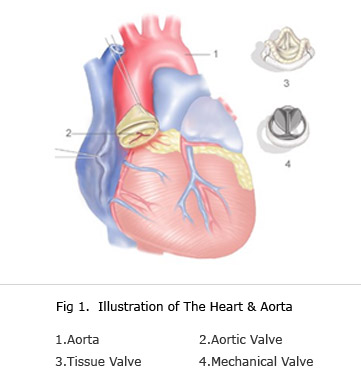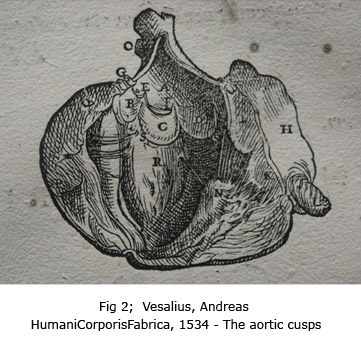Aortic valve replacement is a type of open-heart surgery.
The heart has four chambers. There are two small chambers at the top of the heart called atria, and two large chambers at the bottom called ventricles. Each ventricle has two valves: the mitral valve controls the blood flowing into the ventricle and the aortic valve controls the blood flowing out of the ventricle.
heart called atria, and two large chambers at the bottom called ventricles. Each ventricle has two valves: the mitral valve controls the blood flowing into the ventricle and the aortic valve controls the blood flowing out of the ventricle.
The aortic valve controls the flow of blood out of the left ventricle of the heart to the the aorta. The aortic valve opens to allow blood to flow from the heart out to the rest of your body. It then closes to stop any blood leaking back into the heart.
Why is it necessary to replace the aortic valve?
The aortic valve may need to be replaced for two reasons:
1. Aortic Stenosis – the aortic valve becomes narrowed and obstructs the blood flowing through it. About 10 to 15 percent of the population above 55 has this, and about 25 percent of the population over 65 has it. That does not produce much of a problem unless it progresses to stenosis.
2. Aortic regurgitation – the aortic valve leaks and blood flows back through it into the left ventricle
How is aortic valve replacement carried out?
In surgery, an incision is made in the chest to access the heart. The heart is then stopped and a heart-lung bypass machine is used to take over the circulation during the operation.
The aortic valve is removed and replaced with an artificial valve (prosthesis). The heart is then started again and the incision in the chest is closed.
Risks
An aortic valve replacement carries a risk of complications, some of which can be life threatening. Around 1 in 100 people who undergo this type of surgery die from complications during or shortly after surgery.
However, if aortic stenosis and aortic regurgitation are not treated, there is a much higher risk of dying from these conditions. Each case is carefully selected and the benefits of aortic valve replacement will usually far outweigh any associated risk of surgery.
Types of heart valve that you can choose?
There are two main types of new valves:
Mechanical — made of man-made materials, such as titanium or ceramic. These valves last the longest, but you will need to take blood-thinning medicine, such as warfarin or aspirin, for the rest of your life.
Biological — made of human or animal tissue. These valves last 10 to 12 years, but you may not need to take blood thinners for life.
For further information or advice from Mr Lall please use the contact form.

